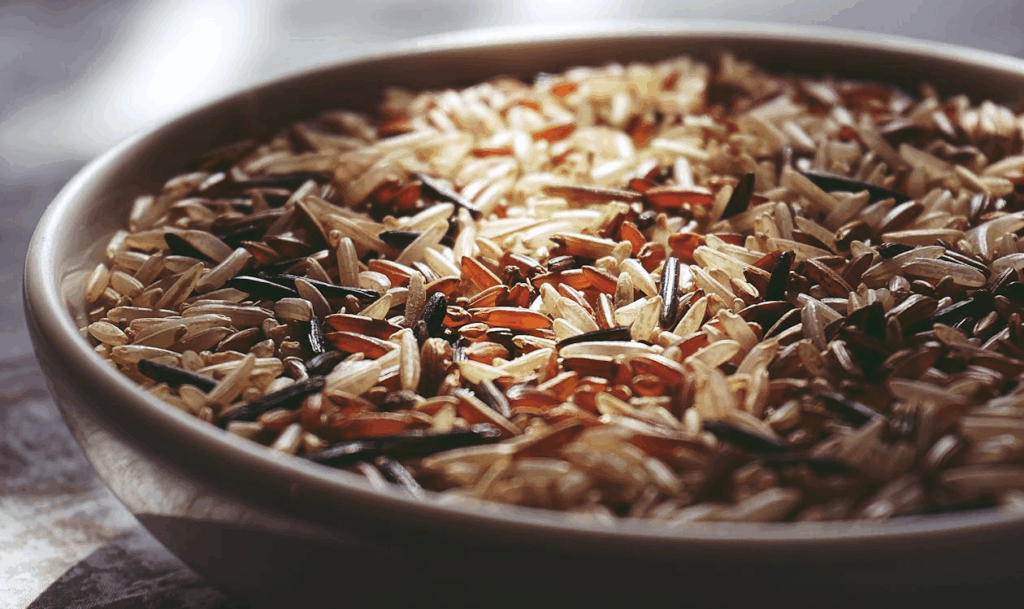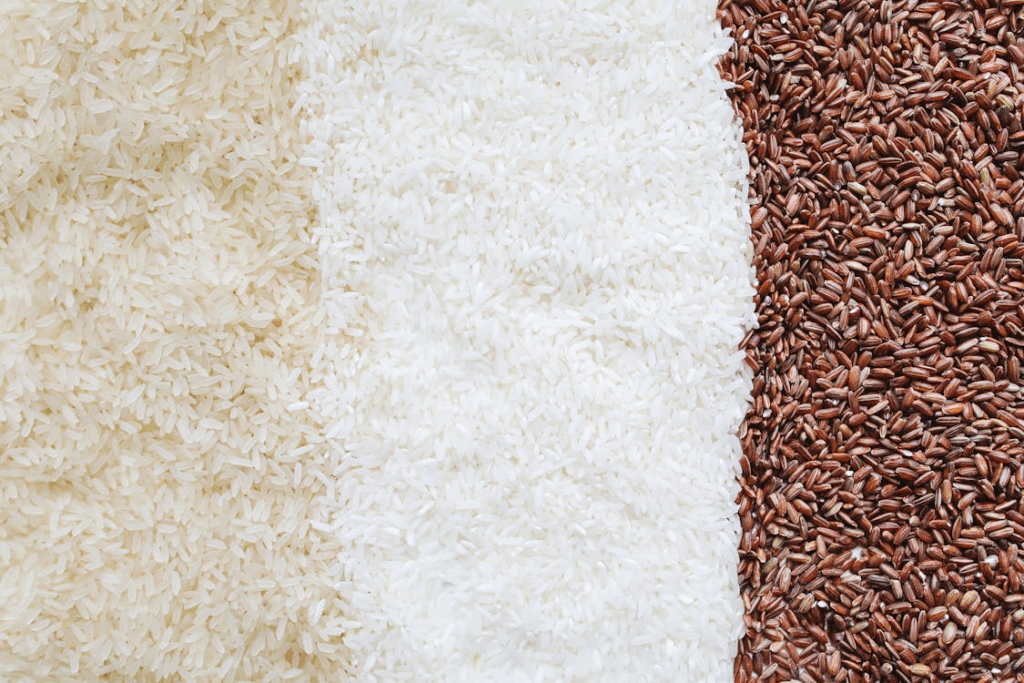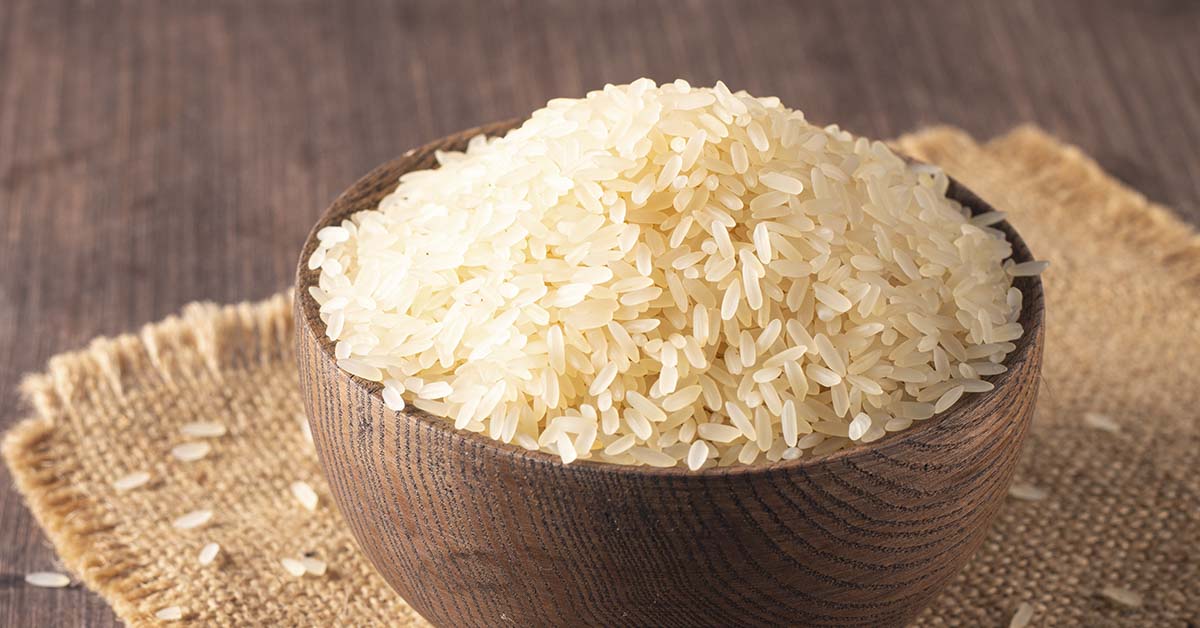A recent nationwide investigation has revealed alarming levels of arsenic and cadmium contamination in rice sold across the United States. Samples were sourced from more than a 100 different brands in the United States. The levels detected far exceed the recommended amounts, especially for infants, toddlers, and pregnant individuals.
Healthy Babies Bright Futures (HBBF) tested every rice sample in their 2025 report “What’s in Your Family’s Rice?” and found arsenic in all of them, with more than 25% of the samples exceeding the FDA’s safety limit for arsenic in infant rice cereal
Widespread Contamination in Store-Bought Rice

HBBF’s independent laboratory analysis tested 145 rice samples from stores nationwide and rice from other countries. These included varieties grown in the U.S. as well as imports from countries such as Italy, India, and Thailand. The results revealed that arsenic was detected in 100% of the samples. More than 1 in 4 samples exceeded the FDA’s action level of 100 parts per billion (ppb) for infant rice cereal.
Arsenic is an element that is found naturally in water, soil and air. It is most toxic when in it’s inorganic form. Arsenic is also carcinogenic and early-life exposure to arsenic could result in stillborn births for pregnant people and neurodevelopmental disorders. Cadmium, another toxic heavy metal, was present in all but one sample. HBBF also detected other heavy metals, including lead and mercury, in the rice samples, though these appeared at lower levels compared to arsenic and cadmium.
Researchers link arsenic and cadmium to serious long-term health risks, including neurodevelopmental harm, cancer, kidney damage, and reduced IQ in children. Both metals can cross the placenta, posing particular risks during pregnancy and early childhood, negatively impacting a child’s development.
Which Rice Is Most Contaminated?

The contamination levels varied significantly depending on the type of rice and its region of cultivation, rather than the brand. Brown and white rice often contain high levels due to the milling process where heavy metals are concentrated. U.S.-grown brown rice showed the highest levels of contamination, with total heavy metals measuring 151 parts per billion (ppb), including 129 ppb of arsenic.
White rice from the U.S. Southeast, often simply labeled “USA,” contained 118 ppb of total heavy metals. Researchers found that Arborio rice from Italy, commonly used for risotto, contained 142 parts per billion (ppb) of total heavy metals, including 101 ppb of arsenic. In contrast, California-grown sushi and Calrose rice exhibited the lowest contamination levels, with 65 ppb total heavy metals and 55 ppb arsenic.
Why Arsenic in Rice Matters for Families
Rice is one of the top sources of arsenic exposure for children under two years old, accounting for approximately 7.5% of total arsenic intake. This exposure is even higher among Hispanic, Latino, and Asian American infants, who consume more rice on average. 30% of their arsenic exposure comes from rice.
Early-life exposure to arsenic and cadmium is particularly dangerous. These metals can impair neurodevelopment, leading to reduced IQ, learning difficulties, and behavioral problems later in life. Scientists identify cadmium as a known carcinogen that causes kidney, bone, stomach, and lung diseases.
Safer Rice Choices and Cooking Tips
The report offers guidance for families looking to reduce their exposure to arsenic and cadmium in rice. It recommends choosing rice varieties with lower contamination levels, such as California-grown sushi rice, Calrose rice, Indian basmati rice, and Thai jasmine rice. Furthermore, experts encourage families to consider alternative grains like quinoa, barley, millet, buckwheat, and farro, which contain on average 28 times less arsenic and 3 times fewer overall heavy metals than rice.
To further reduce arsenic intake, the report advises using specific cooking methods, including soaking rice for 30 minutes or overnight and cooking it in excess water. Follow this up by draining the water, as simply rinsing rice is insufficient. Moreover, incorporating iron-rich and protective nutrients such as vitamin C, B vitamins, calcium, zinc, and protein into meals can help block or reduce the absorption of heavy metals. Foods rich in these nutrients include leafy greens, beans, yogurt, strawberries, citrus fruits, and lean meats.
For more detail: How to Cook Rice to Lower Arsenic Levels
Calls for Federal Action
Healthy Babies Bright Futures urges the FDA and rice industry to take stronger regulatory measures to protect consumers. They urge the FDA and manufacturers to set enforceable limits for arsenic and cadmium in all rice products, not just infant rice cereal. HBBF urges regulators to enforce clear and definitive labeling on rice products that meet infant safety standards. They also recommend that companies and agencies mandate regular testing and transparently share the heavy metal levels in the rice they sell in the U.S. with consumers.
Jane Houlihan, HBBF’s National Director of Science and Health, emphasized the urgency: “Parents shouldn’t have to worry that a common first food like rice could carry hidden risks. With just a few changes in the kitchen and stronger rules from the FDA, we can dramatically lower children’s exposure to harmful metals”.
Read More: FDA Issues Recall for Supplements Due to High Levels of Lead and Arsenic

